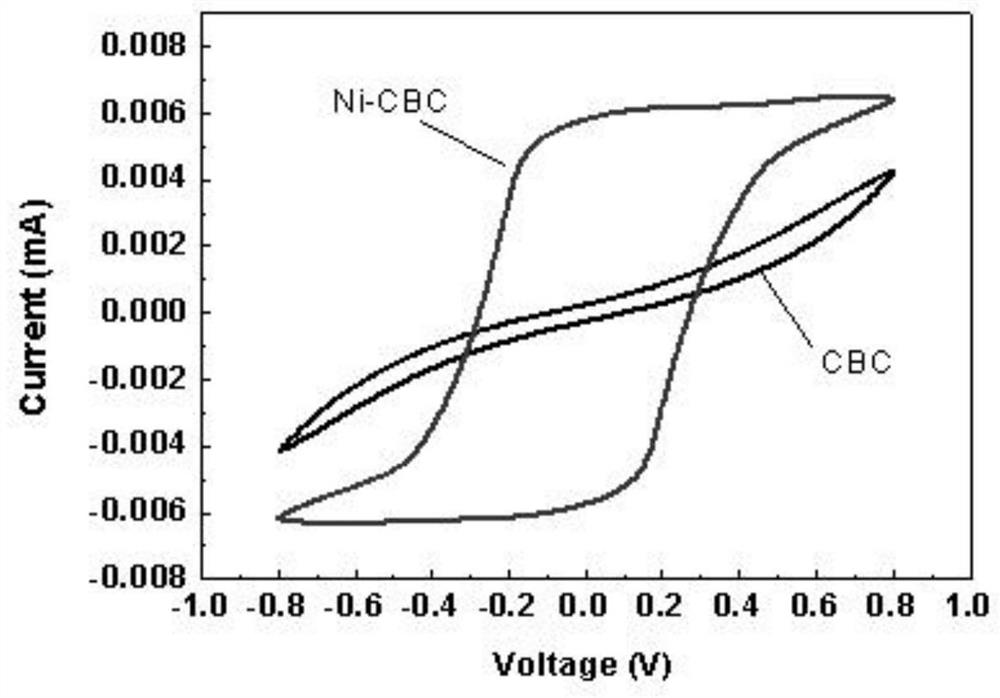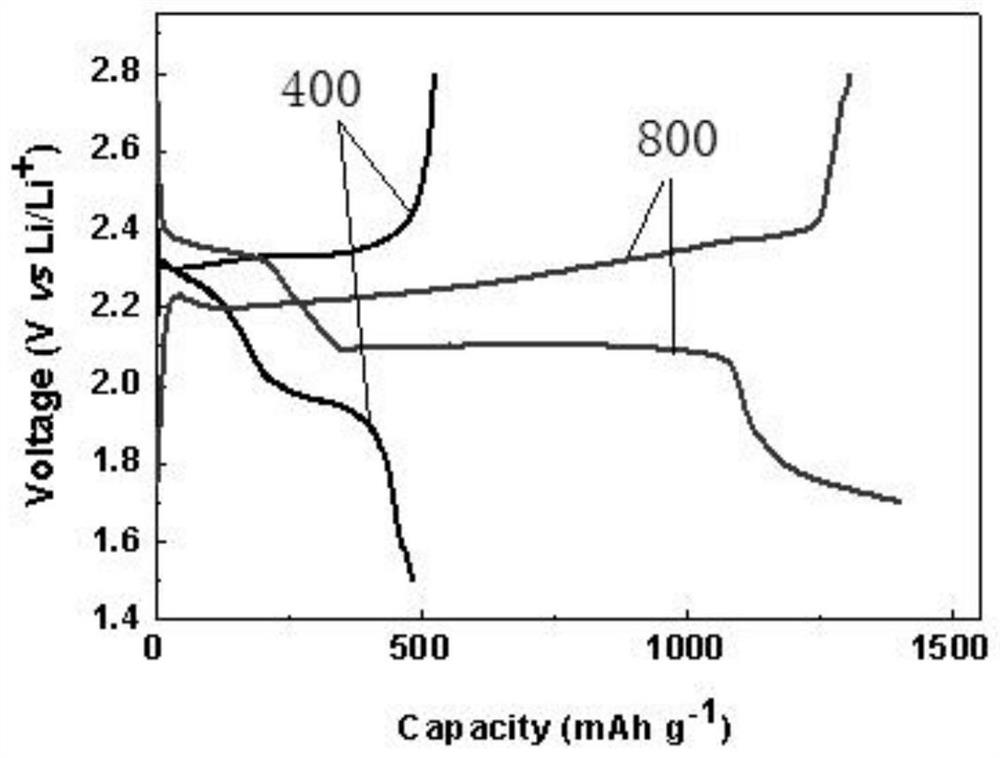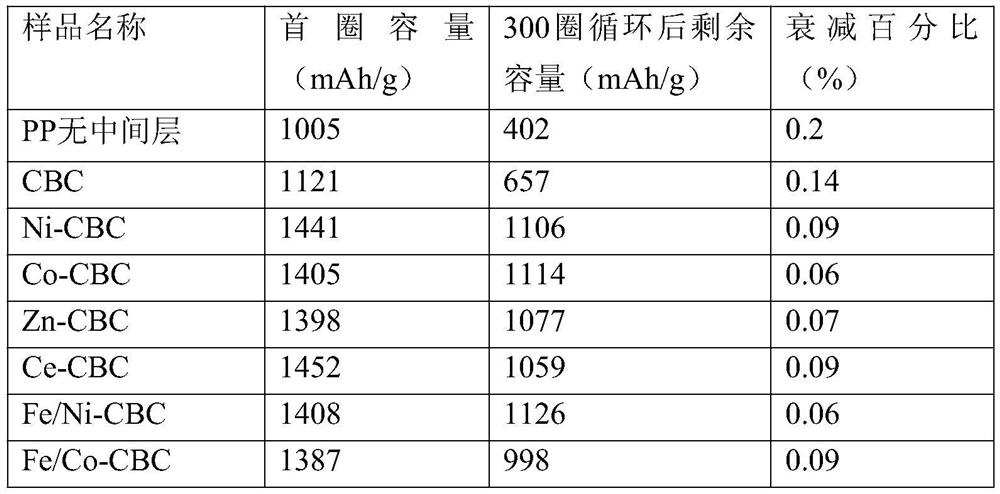MOF-modified cellulose material intermediate layer and preparation method for lithium-sulfur batteries
A lithium-sulfur battery and interlayer technology, applied in the direction of lithium batteries, battery electrodes, fiber chemical characteristics, etc., can solve the problems that the interlayer cannot be self-supporting and independent film formation, the battery energy is unstable, and the structure of the positive plate is damaged, etc., to achieve Improve redox kinetics, increase graphitization degree, and reduce cost
- Summary
- Abstract
- Description
- Claims
- Application Information
AI Technical Summary
Problems solved by technology
Method used
Image
Examples
Embodiment 1
[0030] 1. Soak bacterial cellulose hydrogel in 5% sodium hydroxide solution, heat to 80 degrees, purify for several hours, and then wash with deionized water until neutral.
[0031] 2. Configure 0.05M Ni(NO 3 ) 2 6H 2 O aqueous solution, the mass ratio to bacterial cellulose is (15-20): 1, and then the purified bacterial cellulose is soaked in the solution for 12 hours.
[0032] 3. Configure 0.4M 2-methylimidazole solution, the molar ratio of nitrogen-containing organic matter (2-methylimidazole) to the metal ion in the transition metal salt is 20:1, pour it into the solution in the previous step, and turn it at 1000 rpm Stir at a high speed for 15-30 minutes, then reduce the speed to 200 rpm, and keep stirring for 24 hours to carry out the self-assembly of Ni-MOF.
[0033] 1.163g of Ni(NO) dissolved in 80ml of water in the present embodiment 3 ) 2 6H 2 O, the quality of nitrogen-containing organic matter 2-methylimidazole is 2.624g, which is used for the modification of...
Embodiment 2
[0040] The preparation process of the intermediate layer of this example is the same as that of Example 1, except that the transition metal salt solution in this example is 0.05M Co(NO 3 ) 2 6H 2 O aqueous solution to obtain the middle layer of cellulose material (Co-CBC).
Embodiment 3
[0042] The preparation process of the intermediate layer of this embodiment is the same as that of Example 1, except that the transition metal salt solution in this embodiment is 0.05M Zn(NO 3 ) 2 6H 2 O aqueous solution to obtain the middle layer of cellulose material (Zn-CBC).
PUM
| Property | Measurement | Unit |
|---|---|---|
| electrical conductivity | aaaaa | aaaaa |
| electrical conductivity | aaaaa | aaaaa |
| quality score | aaaaa | aaaaa |
Abstract
Description
Claims
Application Information
 Login to View More
Login to View More - R&D
- Intellectual Property
- Life Sciences
- Materials
- Tech Scout
- Unparalleled Data Quality
- Higher Quality Content
- 60% Fewer Hallucinations
Browse by: Latest US Patents, China's latest patents, Technical Efficacy Thesaurus, Application Domain, Technology Topic, Popular Technical Reports.
© 2025 PatSnap. All rights reserved.Legal|Privacy policy|Modern Slavery Act Transparency Statement|Sitemap|About US| Contact US: help@patsnap.com



